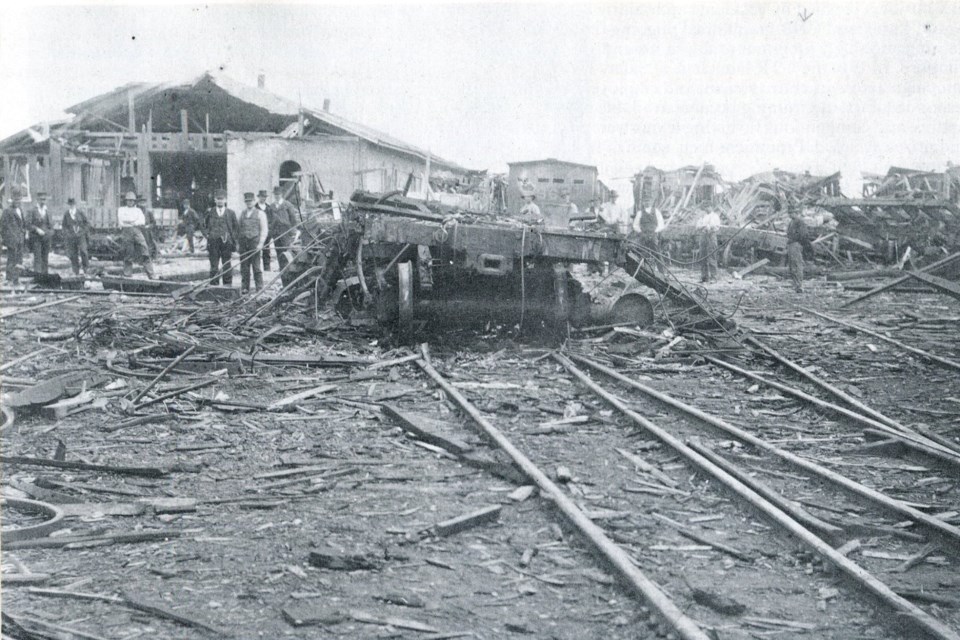On May 5, 1879, the town of Stratford was rocked by a massive explosion at the Grand Trunk Railway train station. The explosion was caused by a mislabeled shipment of nitroglycerin powder that had leaked out onto the rails. When the train moved, the nitroglycerin exploded, causing massive damage to the surrounding area.
The shipment of nitroglycerin was being transported from Montreal to Amherstburg, Ont., to be used in the construction of bridges. However, due to a mislabeling error, the powder was misidentified as less dangerous materials and was not handled or stored properly. As a result, the highly explosive material leaked out onto the rails, and when the train moved, it caused a massive explosion.
The explosion was felt for over 20 miles and was initially mistaken for an earthquake. The force of the explosion was so great that it moved the Knox church steeple three feet off its base, which was 1.5 kilometres away. Sidewalks were moved, and pedestrians were knocked down by the blast. There was a 25-foot hole left by the explosion, which was filled in by 500 Grand Trunk Railway workers in just 30 minutes as this was a major junction for other railway lines.
The explosion caused damage to every window and door in the town of Stratford. Straw hats that filled a box car were found blocks away from the site of the explosion. Three people were killed in the blast, and several others were injured. The damages were estimated at $450,000, which was a significant amount of money at the time. (estimated $12,347,836 today)
Despite the massive damage caused by the explosion, the Grand Trunk Railway company did not offer any compensation to the victims or their families. Instead, they only offered jobs to the male survivors of those who were killed. The owner of the nitroglycerin shipment, who was ultimately responsible for the mislabeling, gave only $100 in compensation.
The Stratford explosion was a tragic event that demonstrated the importance of proper handling and storage of dangerous materials. It also highlighted the need for companies to take responsibility for their actions and compensate those who are affected by their mistakes.
Today, the site of the Grand Trunk Railway train station is not marked and should be by a plaque that commemorates the victims of the explosion. The incident remains a reminder of the importance of safety in the transportation and handling of dangerous materials, and the need for companies to take responsibility for their actions.
This link describes in a newspaper report the graphic descriptions of the explosion and its victims. Journalism has somewhat changed since then. (WARNING GRAPHIC)


